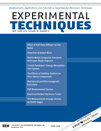
EXPERIMENTAL TECHNIQUES
Scope & Guideline
Transforming Ideas into Experimental Excellence
Introduction
Aims and Scopes
- Experimental Mechanics and Structural Analysis:
The journal emphasizes the importance of experimental mechanics, including modal analysis, vibration testing, and structural health monitoring. It explores innovative methodologies for evaluating material properties and structural responses under various loading conditions. - Material Characterization and Failure Analysis:
A significant focus is on the characterization of materials using advanced experimental techniques. This includes studies on fatigue, fracture mechanics, and corrosion resistance, providing insights into the performance and longevity of materials in real-world applications. - Innovative Measurement Techniques:
The journal highlights novel measurement techniques such as Digital Image Correlation (DIC), thermography, and laser-based methods. These techniques enable precise measurement of deformations, strains, and thermal characteristics, facilitating improved data accuracy in experimental studies. - Multidisciplinary Approaches:
Research published in the journal often incorporates multidisciplinary approaches, integrating techniques from mechanical engineering, materials science, and applied physics to address complex experimental challenges. - Computational and Experimental Integration:
The journal also covers the integration of computational models with experimental data, enabling researchers to validate simulations against experimental results and enhance the understanding of complex physical phenomena.
Trending and Emerging
- Advanced Non-Destructive Testing Methods:
There is a growing emphasis on advanced non-destructive testing (NDT) techniques, such as ultrasonic testing, thermographic inspections, and X-ray computed tomography. These methods are increasingly being used for material characterization and structural integrity assessments without causing damage. - Integration of Machine Learning and AI in Experimental Techniques:
The incorporation of machine learning and artificial intelligence into experimental methodologies is on the rise. Researchers are utilizing these technologies for data analysis, predictive modeling, and optimization of experimental setups, enhancing the efficiency and accuracy of experiments. - Additive Manufacturing and 3D Printing Applications:
The journal is increasingly publishing studies related to additive manufacturing and 3D printing. This includes research on the mechanical properties of printed materials and innovative testing methods tailored for additive manufacturing processes. - Sustainability and Eco-friendly Materials Testing:
Research focused on sustainability, including the testing and characterization of eco-friendly materials and composites, is becoming more prominent. This reflects a broader trend towards environmentally conscious engineering practices. - Real-time Monitoring and Smart Sensors:
The use of real-time monitoring systems and smart sensors in experimental setups is gaining traction. This trend supports the development of responsive and adaptive experimental techniques that can provide immediate feedback during testing.
Declining or Waning
- Traditional Mechanical Testing Methods:
There has been a noticeable decrease in the publication of studies focusing on conventional mechanical testing methods, such as static tensile tests, as researchers increasingly turn to more innovative and automated techniques that offer greater accuracy and efficiency. - Basic Theoretical Studies:
The journal has seen a decline in purely theoretical studies without experimental validation. There is a stronger emphasis on practical applications and experimental validation, leading to fewer publications that focus solely on theoretical frameworks. - Generalized Approaches to Material Properties:
Research that presents generalized approaches to material properties without specific experimental context is becoming less common. The trend is shifting towards detailed, context-rich studies that provide comprehensive insights into specific materials or applications. - Non-advanced Fabrication Techniques:
There is a reduction in studies surrounding basic fabrication techniques that do not incorporate advanced methodologies or technologies. The focus has shifted towards innovative manufacturing processes that leverage modern technology.
Similar Journals
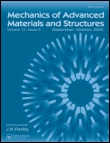
MECHANICS OF ADVANCED MATERIALS AND STRUCTURES
Advancing the frontiers of materials science and structural engineering.Mechanics of Advanced Materials and Structures is a distinguished journal published by Taylor & Francis Inc, focusing on the innovative fields of Civil and Structural Engineering, Materials Science, Mechanical Engineering, and Mechanics of Materials. With ISSN 1537-6494 and E-ISSN 1537-6532, this journal is positioned within the Q2 quartile rankings of its categories, demonstrating its significant scholarly impact. It has been a pivotal platform since its inception in 1997, providing researchers and professionals with comprehensive insights and the latest findings, until the expected closure in 2024. Situated in the United Kingdom, the journal is dedicated to enhancing the understanding of complex materials and structural behavior through rigorous peer-reviewed articles. Its high visibility in Scopus rankings further underscores its importance, making it an essential resource for those engaged in advanced materials research and structural analysis. With options for open access, the journal ensures broad dissemination of knowledge, fostering a collaborative environment for researchers, practitioners, and students alike.
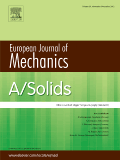
EUROPEAN JOURNAL OF MECHANICS A-SOLIDS
Advancing the Frontiers of Solid MechanicsThe EUROPEAN JOURNAL OF MECHANICS A-SOLIDS, published by ELSEVIER and based in the Netherlands, stands as a premier outlet for research in the field of solid mechanics. With an impressive track record since its inception, the journal has been indexed in prestigious categories including Materials Science, Mechanical Engineering, and Mathematical Physics, achieving Q1 quartile status across these domains in 2023. This recognition underscores the journal's impact, with Scopus rankings placing it in the top echelon of its respective fields, such as #39 in General Physics and Astronomy and #116 in Mechanical Engineering, demonstrating its significance and wide-reaching influence in the academic community. Scientists, engineers, and researchers are encouraged to submit their cutting-edge findings in areas related to solid mechanics, contributing to the journal's mission of advancing knowledge and innovation in this vital discipline. The journal's comprehensive scope allows for interdisciplinary engagement, making it an essential resource for professionals and students alike seeking to explore the latest developments in mechanics of materials and related areas.
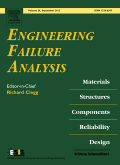
Engineering Failure Analysis
Decoding Failures to Enhance Engineering ReliabilityEngineering Failure Analysis is a prestigious peer-reviewed journal published by PERGAMON-ELSEVIER SCIENCE LTD, dedicated to advancing the field of engineering through comprehensive investigations into the causes and consequences of failures in various engineering domains. Established in 1994, the journal has become a cornerstone of knowledge in sectors such as Aerospace, Automotive, and Materials Science, earning its place within the Q1 quartile across multiple relevant categories in 2023. With a broad scope that encompasses topics related to safety, risk, reliability, and quality, it serves as a vital resource for researchers, professionals, and students keen on understanding how to mitigate failures and improve engineering practices. Although this journal does not currently offer Open Access, its impact is underscored by its high Scopus ranking, where it sits comfortably in the 36th position out of 307 in General Engineering. By bridging theoretical insights and practical applications, Engineering Failure Analysis plays a pivotal role in shaping the future of engineering standards and safety practices.

STRENGTH OF MATERIALS
Bridging theory and practice in material mechanics.STRENGTH OF MATERIALS is a prestigious journal published by SPRINGER that focuses on the critical field of mechanics of materials, providing an authoritative platform for the dissemination of research and developments in material strength analysis since 1969. With an ISSN of 0039-2316 and an E-ISSN of 1573-9325, this journal serves a global audience of researchers, professionals, and students, contributing essential insights into the physical properties and performance characteristics of various materials under stress and strain. As part of the United States' academic literature, it showcases work that not only advances theoretical knowledge but also applies to practical engineering scenarios. Although ranked in the Q4 tier with respect to its category in Mechanics of Materials, with a Scopus rank of #319 out of 398 (19th percentile), it remains an important resource for those looking to expand their understanding in this specialized area. Researchers can access a wealth of information through this journal, fostering continued innovation and interdisciplinary collaboration.
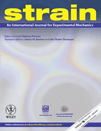
STRAIN
Transforming Understanding of Material BehaviorSTRAIN is a prestigious peer-reviewed journal published by WILEY, dedicated to advancing the field of mechanical engineering and mechanics of materials. With an ISSN of 0039-2103 and an E-ISSN of 1475-1305, STRAIN has been a pivotal resource for researchers and professionals since its inception in 1965. As of 2023, it holds a commendable categorization in the Q2 quartile rankings for both Mechanical Engineering and Mechanics of Materials, reflecting its significant contribution to the field and ranking in the top percentile of its category. STRAIN aims to disseminate high-quality, innovative research that enhances the understanding of strain phenomena and materials behavior under various conditions. Researchers seeking to publish cutting-edge studies will find a welcoming platform in STRAIN, where they can share their insights with a global audience committed to the evolution of engineering practices. Although it does not offer an Open Access option, its robust editorial standards ensure that all published works adhere to the highest levels of academic integrity and scientific rigor.

Bridge Structures
Innovating Design and Maintenance in Structural IntegrityBridge Structures is an esteemed academic journal dedicated to the field of structural engineering, particularly focusing on the design, analysis, and maintenance of bridge systems. Published by IOS PRESS, a reputable publisher known for its contributions to various scientific fields, the journal serves as an integral platform for disseminating innovative research and advancements within the domain. With an ISSN of 1573-2487 and an E-ISSN of 1744-8999, Bridge Structures has established itself over the years—covering contributions from 2005 to 2024. The journal has attained a commendable ranking within the Q3 category in Building and Construction and holds a position within the 28th percentile among its peers according to the Scopus rankings. Though the journal operates on a subscription basis, its commitment to advancing engineering knowledge is paramount, making it essential reading for researchers, practitioners, and students eager to deepen their understanding of bridge engineering. The journal not only explores theoretical advancements but also emphasizes practical applications, providing a well-rounded perspective on current challenges and solutions in the field of bridge structures.

Journal of Materials and Engineering Structures
Advancing Sustainable Engineering SolutionsJournal of Materials and Engineering Structures is a pioneering Open Access journal published by MOULOUD MAMMERI UNIVERSITY OF TIZI-OUZOU, dedicated to advancing the field of materials science and engineering. Since its inception in 2014, the journal has aimed to provide researchers, professionals, and students with a platform for sharing cutting-edge research and innovative applications in materials engineering and construction structures. Although the HIndex and Scopus ranking data are not specified, the journal plays a crucial role in disseminating knowledge that contributes to the development of sustainable and efficient engineering practices. With its commitment to accessibility and knowledge sharing in the heart of Algeria, the Journal of Materials and Engineering Structures is poised to make a significant impact on both local and global academic communities.

RUSSIAN JOURNAL OF NONDESTRUCTIVE TESTING
Transforming Knowledge into Practical Solutions in Nondestructive TestingRUSSIAN JOURNAL OF NONDESTRUCTIVE TESTING, published by PLEIADES PUBLISHING INC, is a respected academic journal that has been contributing significantly to the fields of Condensed Matter Physics, Materials Science, Mechanical Engineering, and Mechanics of Materials since its inception in 1996. With a concentrated focus on the latest advancements in nondestructive testing techniques, it serves as a vital resource for researchers, engineers, and practitioners seeking to improve material integrity and safety across various applications. Despite its classification in the Q3 quartile categories, the journal continues to foster scholarly dialogue and innovation in non-destructive research methodologies. Although it does not currently offer open access, the journal remains committed to disseminating high-quality research that influences both theoretical and practical landscapes. With an emphasis on quality, the journal seeks to connect academics and industry experts alike, thus enhancing the relevance and application of nondestructive testing in real-world contexts.

EXPERIMENTAL MECHANICS
Fostering Collaboration for Engineering Excellence.EXPERIMENTAL MECHANICS, published by SPRINGER, stands at the forefront of research in the fields of Aerospace Engineering, Mechanical Engineering, and Mechanics of Materials. Established in 1961, this esteemed journal has made significant contributions to the understanding and advancement of experimental methodologies and techniques essential for both academic research and practical applications in engineering. With an impressive impact factor and recognition as a Q2 journal in its category for 2023, it ranks 40th in Aerospace Engineering and has established itself as a valuable resource for researchers and practitioners alike. Although it is not an Open Access journal, it provides robust access options, ensuring that high-quality research remains accessible to a broad audience. The journal aims to disseminate innovative findings, foster collaboration, and inspire the next generation of engineers and scientists by focusing on the challenges and developments within experimental mechanics. The editorial board comprises leading experts in their respective fields, further emphasizing the journal’s commitment to excellence and relevance in an ever-evolving technological landscape.

Structural Integrity and Life-Integritet I Vek Konstrukcija
Empowering Innovation in Civil Engineering.Structural Integrity and Life - Integritet I Vek Konstrukcija is a prominent open-access journal dedicated to advancing the fields of Civil and Structural Engineering, Mechanics of Materials, and Safety, Risk, Reliability, and Quality. Published by the SOC STRUCTURAL INTEGRITY & LIFE, this journal has been disseminating high-quality research since 2001 from its base in Belgrade, Serbia. The journal's commitment to open access ensures that vital research is freely accessible to a global audience, fostering collaboration and innovation within the academic community. With an impressive categorization in the 2023 quartiles, including Q2 in Metals and Alloys and Q3 in related fields, Structural Integrity and Life stands as a vital resource for researchers, professionals, and students striving to enhance understanding and applications in structural integrity and material performance. The journal invites contributions that address critical issues in the field, pushing the boundaries of knowledge and practical applications, and welcomes both empirical studies and theoretical discussions that can drive forward the next generation of engineering solutions.